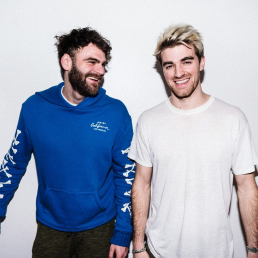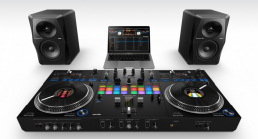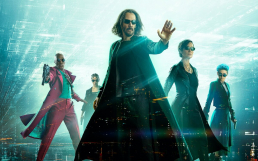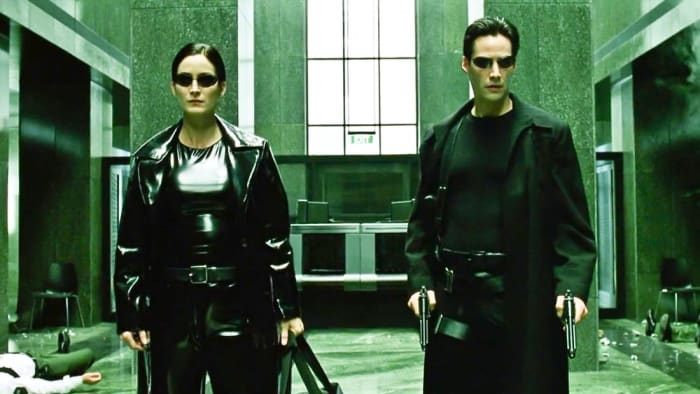THE CHAINSMOKERS ANNOUNCE RELEASE DATE FOR FIRST NEW MUSIC IN THREE YEARS: LISTEN
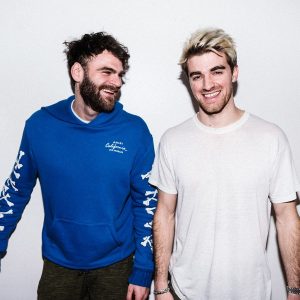
The road to The Chainsmokers' fourth album, TCS4, is officially underway after the duo announced the release date for a new single called "High."
The Chainsmokers' Drew Taggart and Alex Pall have baffled fans in early 2022 by appointing doppelgängers to promote the new music, sharing a series of tongue-in-cheek videos on their TikTok. The lookalikes—one of whom is actor Ryan O'Flanagan, who has appeared in New Girl and American Vandal—even appeared onstage at a recent performance in Las Vegas to troll the crowd:
"High" is set to drop Friday, January 28th, and will be the first new music from The Chainsmokers since 2019's World War Joy album. Check out a preview below.
The Chainsmokers took an extended hiatus from social media back in February 2020, when they told fans they were taking time to cultivate their "next chapter in music."
THE CHAINSMOKERS ARE ONE OF THE MOST POPULAR GROUPS OF
"We have never been more inspired and are already hard at work on TCS4 but we are going to be taking a break from social media (minus a few obligations) to give it the attention it needs," they said at the time.
They now seem to be in full album mode after a video shared on TikTok on January 10th with the caption, "It's almost time #TCS4." They have not yet announced a release date for the album.
FOLLOW THE CHAINSMOKERS:
Facebook: facebook.com/thechainsmokers
Twitter: twitter.com/TheChainsmokers
Instagram: instagram.com/thechainsmokers
Spotify: spoti.fi/3h6a9ay
PIONEER DJ LAUNCH TWO NEW SERATO CONTROLLERS
The DDJ-REV-1 and the DDJ-REV-7 are totally new designs from Pioneer DJ
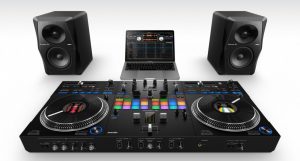
Pioneer DJ has launched two new Serato controllers with a totally new design – the DDJ-REV-1 and the DDJ-REV-7. Aimed at opposite ends of the experience spectrum, both controllers are designed with battle-style DJs in mind, mimicking the layout of two turntables and a mixer.
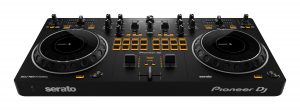
First off, the REV-1 is the entry-level controller in the range, aimed at users of Serato DJ Lite, which the layout mimics. Keen eye’d DJs might notice the mixer section also mimics that of the DJM-S series, which is Pioneer DJ’s flagship battle mixer range. There’s Paddle FX levers for adding quick performance FX, eight performance pads with a range of modes including Hot Cues, Sampler and Scratch Bank to auto-load some classic scratch techniques. There’s also a three-band EQ and dual-pass filter per channel.
The deck section is where Pioneer DJ has switched tac, moving the tempo slider to the top of the controller rather than on the side. This is similar to how scratch and battle DJs layout their turntables. Pioneer DJ has also made the jogs the same size as those on the higher-end DDJ-SB3, for more accurate scratching.
A new feature called Track Scratching has also been added, which automatically jumps back to the previous cue point when you move the platter backwards or when you lift your hand, to make it easier to scratch. It means you won’t have to quickly try and find the exact point to start your scratch from. Pioneer DJ has also combined the mic and master output from the mixer so that the mic feed runs to your stream rather than only to the master output as it does on some other controllers.

REV-7 is aimed at pro users, with a full suite of pro features you’d expect for the seasoned Serato DJ Pro user. Also a two-channel unit, the REV-7 features motorised jog wheels, as well as a near-identical centre section to the DJM-S series mixers. Like the REV-1, Pioneer DJ has moved the tempo slider to the top of the jog wheel, to mimic the setup of a battle DJ. The jogs are full 7-inch and feature the now common-place on-jog display.
It features a similar mixer layout to the REV-1, with long-throw volume faders, crossfader, three-band EQ and dual-band filter per channel, with eight RGB performance pads, with the same modes: Hot Cue, Roll, Sampler, Scratch Bank and more.
The main difference between the REV-7 and the REV-1 is that many of the features such as sample triggering and FX are all built into the unit and can be used without a computer. The 7 has 22 FX that can be applied to any input signal, regardless of whether you’re using Serato or not. It also includes the Color FX section with a further five FX. And because of that, the REV-7 has a lot more I/O options including phono amp inputs, two mic ins, two aux ins, quarter-inch jack booth outs, unbalanced RCA master out and balanced XLR outs. As mentioned, the jogs are motorised, and the on-jog display shows the waveform and track info of the music or sample loaded on each deck. Anyone who buys the REV-7 will also get three months of TIDAL Hi-Fi for free.
The REV-1 will cost £259 while the REV-7 will cost £1,829. Both are available now. Watch the video below for more info and visit the Pioneer DJ site for the full spec.
1001Tracklists Presents: A State Of Dance Music 2021
DIVE INTO THE FULL REPORT
DIVE INTO THE FULL REPORT
RAVE ON: WORLD'S FIRST DECENTRALIZED EDM FESTIVAL PLANNED FOR 2022
2021 saw the electronic dance music landscape erupt into a technological inferno, as artists and event organizers tore hell for leather into the NFT gold rush. And as more industry pros adopt blockchain technology, the fabric of the scene is changing at a torrid pace.
Now, a new event has big ambitions to host what organizers are calling the world's first community-driven, decentralized music festival. The fest, Project Rave, was recently announced by RaversUniverse, a Decentralized Autonomous Organization (DAO).
DAOs are entities that allow platforms to operate as member-owned communities, which are devoid of a consolidated leadership structure.
A decentralized future of the creator economy has been embraced by many reputable electronic music artists an execs, such as deadmau5, who recently backed a DAO called MODA. The underlying objective is to democratize the metaverse-era music ecosystem for independent artists.
Three plaintiffs allege the Pennsylvania-based electronic music festival created "an uncomfortable and dangerous situation" for attendees.
"We are excited to put the power back in the hands of the ravers and the creators," reads the Project Rave website.
Perhaps the most popular means to that end has been the advent of NFTs, or non-fungible tokens. RaversUniverse is set to mint 10,000 "RaveBoy" and "RaveGirl" NFTs, which are hand-drawn from scratch and will unlock rewards for token holders, like rave apparel and entries into giveaways for tickets to upcoming music festivals.
Holders of these tokens will also gain access to exclusive channels where they can not only suggest ideas for the buildout of Project Rave, but also vote on the festival's developmental processes in execution of their decentralized mission. In light of that goal, 30% of the earnings from sales of the NFTs will be distributed to the founding RaversUniverse community.
Project Rave is currently being planned for fall 2022 in Miami. RaversUniverse is set to launch the first phase NFT drop at the end of January.
You can join learn more about Project Rave by joining the RaversUniverse Discord.
FOLLOW RAVERSUNIVERSE:
Website: raversuniverse.com
Twitter: twitter.com/rave_project
Instagram: instagram.com/projectrave
AVICII'S FINAL JOURNAL ENTRIES ILLUMINATE DEPTHS OF STRUGGLE TO BREAK THE CYCLE
Måns Mosesson's new book, Tim – The Official Biography of Avicii, illuminates the iconic dance music artist's day-to-day sentiments and struggles with mental illness in ways that have not presented previously.
The biography includes personal journal entries from the 28-year-old "Wake Me Up" producer, who tragically died by suicide in Oman back in 2018. Written during his hospitalized stays for drug and alcohol abuse, the entries showcase Avicii's persistent struggle to break the cycle.
"I had a hard time accepting never drinking again though strongly suggested from all doctors to wait at least a year before even having a beer," Avicii wrote, per The Daily Beast. "Of course, I didn’t listen to the majority of the doctors, I listened to the couple who said it was OK if I was careful. I was ignorant and naive and touring the world, still on the never-ending tour — because once you’ve circled it once, guess what? You start right back over again."
When Avicii announced he was retiring from touring back in 2016, he penned an open letter to fans suggesting he was yearning for the cadence of an ordinary life.
"I am blessed to be able to travel all around the world and perform, but I have too little left for the life of a real person behind the artist," he said at the time. As the New York Post notes, by the time Avicii was rehabilitated, he had already suffered physical effects from the demanding lifestyle, including acute pancreatitis.
Avicii would go on to write that his days in the hospital were "vacations" in themselves since they muted the stress and anxiety of his everyday life. In his final entry, penned the day before his suicide, he reportedly wrote his devastating last words: "The shedding of the soul is the last attachment, before it restarts!"
You can purchase your copy of Avicii's official biography here. Proceeds from sales of the book will benefit the Tim Bergling Foundation, a charity launched by Avicii's parents in their son's memory to fund research and develop preventative solutions against suicide.
Editors Note: If you are struggling with suicidal thoughts, you can call the 24/7 National Suicide Prevention hotline at 1-800-273-8255 or go to SuicidePreventionLifeline.org.
HOW JOHNNY KLIMEK AND TOM TYKWER INFUSED EDM AND ORCHESTRAL MUSIC TO BRING "THE MATRIX RESURRECTIONS" TO LIFE
This feature was co-authored by Bayleigh Bogan and Sara Schulmann.
The Matrix Resurrections was everything the Matrix faithful could have wanted and more.
Following 2003's The Matrix Revolutions, the new film stars Keanu Reeves, Carrie-Anne Moss, Yahya Abdul-Mateen II, Jonathan Groff, and Jessica Henwick. Together, the cast brought a whole new story to the iconic franchise that feels deeply intimate and thrilling.
Viewing the franchise across its 20-year history, these films are arguably some of the most influential bodies of work in the 21st century. The three films to date (not including this latest release) have grossed more $3 billion across the box office, home entertainment sales, video game revenue, soundtrack album sales, merchandising, and more.
But what makes the Matrix films so iconic in American culture? Is it the unique storyline? The bending bullets, iconic wardrobe of the characters, or the mind-melting special effects? It is all of these and more, but one aspect undoubtably intertwined through the latticework of those elements is the music.
This commitment to groundbreaking music remained resolute in Resurrections. Released in conjunction with the film, The Matrix Resurrections (Original Motion Picture Soundtrack), features not only the scores of Golden Globe-nominated composers Johnny Klimek and Tom Tykwer, but also 11 remixes by influential electronic music producers Marcel Dettmann and Thomas Fehlmann, among many others. The soundtrack brings to life a unique body of work that perfectly unites the iconic franchise's orchestral and dance music roots.
EDM.com spoke with Klimek and Tykwer to discuss the process of developing the soundtrack of The Matrix Resurrections, and explore why the fusion of classical and electronic music was such a vital component to the storytelling of the film.
PAYING HOMAGE TO THE MUSICAL HISTORY OF THE MATRIX
Even before being hired as the composers of the film, Klimek and Tykwer were superfans of the Matrix franchise.
"I was amazed by the first film, The Matrix and in particular was inspired by its score,” says Tykwer. “I felt like everyone involved with The Matrix believed that there was a future in combining electronic music with traditional orchestral scores. The film’s score to me was an instant classic. It was something I knew I wanted to work on at some point in my career.”
Unlike other film franchises that have iconic songs, the Matrix franchise, as Tykwer describes, is unique due to the ways in which its installments push the boundaries of sonic experimentation. Klimek stressed that these "unique sounds" buoy each film's score and bring an unmatched layer of energy.
BUILDING THE SCORE ALONGSIDE THE RESURRECTIONS SCRIPT DEVELOPMENT
During the early days of the movie's screenplay development, Klimek and Tykwer had spent over a year recording music with the London Contemporary Orchestra in order to bring samples into the first read-through session with the actors and directors. The goal was to give the cast and crew a feel early on for how the music would complement the acting which, according to both Tykwer and Klimek, made a huge impact in the cohesion of Resurrections and its score.
"Once there is a script, we insist as composers for the musical process to begin right then even if it takes another year for financing to finalize,” says Tykwer. “We believe that the music has to be a major component to the way ideas are conceptualized and executed in the filmmaking process."
This unique approach helped shape the way music was woven through the film. It also gave both Klimek and Tykwer an opportunity to receive feedback from director Lana Wachowski, as well as from actors and other fundamental players. This feedback loop played a pivotal role to achieving a sound that harkened back to Matrix classics—but unique enough to stand on its own.
ORCHESTRAL SCORES AS A SUB-GENRE OF EDM
To entwine the elements of classical music with EDM, Klimek and Tykwer treated the orchestra as a sub-genre of the latter, approaching the recording process like that of a DJ. They went ahead and recorded each musician of the orchestra individually to facilitate greater control and flexibility when manipulating each instrument.
"At the Abbey Road Studio sessions, we recorded everything separately," explains Klimek. "This included the strings, pads, and any underlying themes not only for the string instruments but for the wind and brass instruments as well. Ultimately, the way we treated the recording process was through an electronic production lens, bringing the two genres of music closer together than ever before."
LANA WACHOWSKI’S BACKGROUND IN EDM TIED THE SCORE AND SOUNDTRACK TOGETHER
One of the lynchpins of the sublime soundtrack was the support of fabled writer and director Lana Wachowski, who has long embraced EDM's role in The Matrix. However, many may not know her background in dance music goes beyond the film.
Wachowski is heavily engaged in the EDM community, to the point where she occasionally DJs herself. Her deep appreciation for the art of electronic dance music made a major impact on the way Klimek and Tykwer approached their working relationship with the legendary director.
"Lana is extremely connected in the dance music world," says Tykwer. “She holds an important place in the dance music scene, to the point where many of the DJs featured on the film’s soundtrack were all friends of hers. It is not too much to say that The Matrix franchise has impacted this genre at large."
Tykwer says that during the process of scoring the film, both composers and Wachowski worked almost exclusively in Apple’s Logic X software. According to Tykwer, Logic's grid structure "invited [Wachowski] to think of the score in a more dance music-like theme," further alchemizing orchestra and EDM in the final product.
"Lana cares profoundly about music to the point where she spent months with us just working on the sonics of The Matrix Resurrections," adds Klimek. "She was a true partner with us and was a driving force in bringing this score to new heights, not only for the Matrix fans, but for the dance music culture."
